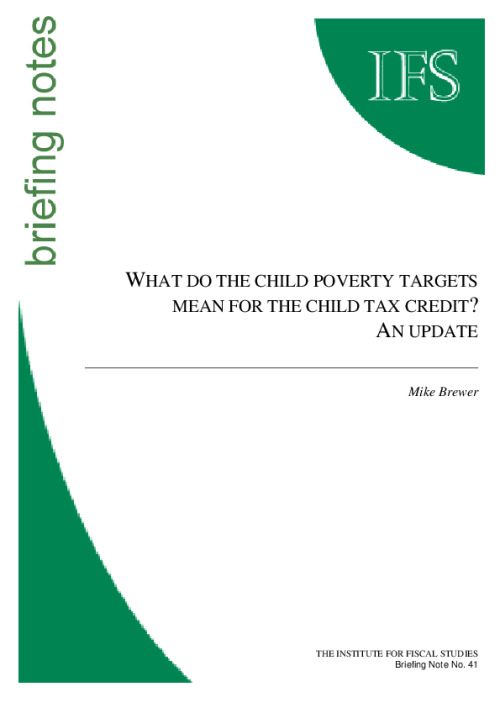The government has a target for child poverty to fall to 3.1 million by 2004-05, measured by the number of children in households with less than 60% median income after housing costs. The latest data showed that 3.8 million children (30% of children in Britain) were in poverty in 2001-02 on this definition. To help achieve the target, increases to means-tested benefits and tax credits need to take effect in April 2004, and therefore need to be announced in the forthcoming Pre-Budget Report.
New calculations suggest that around £billion of further spending on the child tax credit might be needed to meet the child poverty target. Increases in other benefits or tax credits could also reduce child poverty, but at greater cost. But if the government chooses not to increase support for families with children in 2004-05, then real spending on child-contingent support in the tax and benefit system will still have increased by over 50% since 1997, and child poverty in 2004-05 should be at its lowest level since 1989.
The government is still deciding what definition of child poverty it wishes to target in the longer term. If it wishes to reduce further child poverty measured under its current definition, then this will require the means-tested benefits and tax credits received by poor families with children to rise faster than the rate of inflation in the absence of helpful economic or demographic changes, such as more parents working. However, continuing to target a poverty measure defined exclusively in terms of incomes may skew the policy response excessively towards tax credit and means-tested benefits changes, and away from improving public services for children which might have a greater impact on their well-being over the longer term. By way of example, the extra spending that we think is needed for the government to meet its target for 2004-05 would pay for the current Sure Start programme - which aims to improve the health and well-being of families and children aged under 5 in disadvantaged areas - to be doubled in size.









